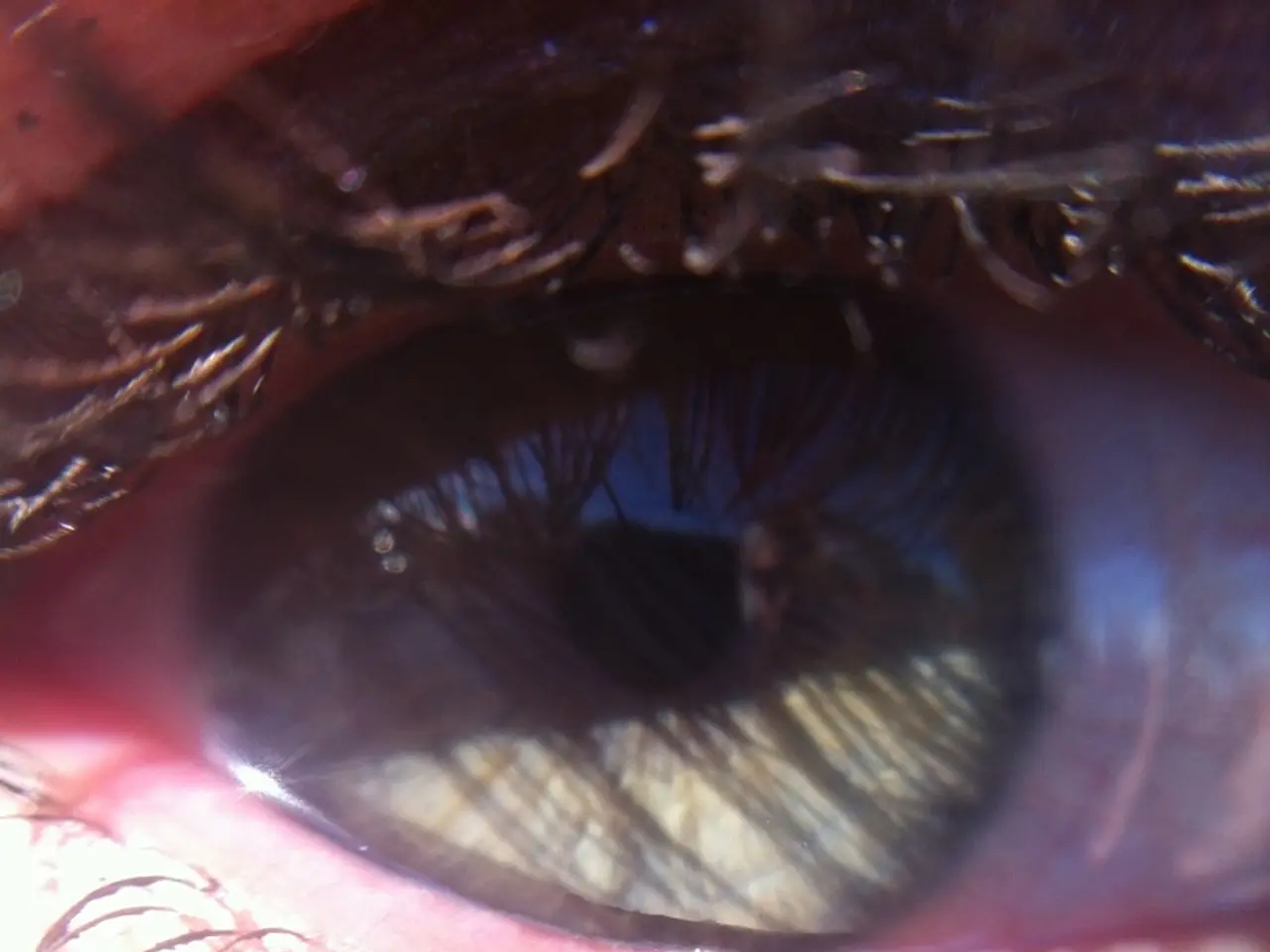Eyelash Mites: Origins, Signs, and Remedies
In the fight against eyelash mite infestations, particularly those causing blepharitis and conjunctivitis, a potential frontline treatment is gaining attention: tea tree oil.
Research suggests that tea tree oil, especially its active component terpinen-4-ol (T4O), can effectively eliminate eyelash mites and reduce eye surface inflammation. In vitro studies show that concentrations as low as 1% can kill Demodex mites within 90 minutes, while a more potent 4% concentration does so within 40 minutes [1]. Clinical trials have also shown that daily use of tea tree oil-based eyelid wipes or cleansers can lead to recovery or significant symptom improvement in the majority of patients with Demodex blepharitis [1][4].
However, it's important to note that higher concentrations or prolonged exposure to tea tree oil could potentially damage meibomian gland epithelial cells, which are critical for eye health [1]. To ensure safety, it's recommended to use properly diluted formulations or commercially prepared products designed for eyelid use. Over-the-counter tea tree oil wipes or cleansers that balance efficacy with safety are commonly recommended [3][5].
In addition to tea tree oil, maintaining strict eyelid hygiene is crucial. Daily cleaning of lash lines with gentle cleansers or wipes, removal of makeup, washing pillowcases, and avoiding cosmetic sharing can help prevent mite spread [3]. In more severe cases or when other treatments fail, prescription anti-parasitic medications such as metronidazole or ivermectin may be used under medical supervision to reduce mite burden [3].
While total eradication of Demodex mites is unlikely since they are common skin commensals, these treatments help manage symptoms, reduce mite counts, and improve eyelid and ocular surface health substantially.
In summary:
| Treatment Type | Effectiveness | Notes | |----------------------------|--------------------------------------------|--------------------------------------------------------------------------------------------| | Tea tree oil (T4O) | Highly effective against Demodex mites | Use diluted or specifically formulated products to minimize ocular surface toxicity | | Eyelid hygiene routines | Crucial adjunctive measure | Removes debris and helps control mite environment | | Prescription anti-parasitics| Effective in severe or resistant cases | Requires medical supervision |
Tea tree oil stands out as a frontline, evidence-supported treatment for Demodex blepharitis and associated eyelash mite infestations, with proper attention to safety and concentration [1][3][4]. Remember, prevention is key, and avoiding close contact with others' hair, eyebrows, and sebaceous glands on the nose can help prevent the spread of eyelash mites.
- In the realm of medical-conditions that affect eye-health, Demodex blepharitis, facilitated by eyelash mites, is gaining considerable attention.
- A predictive frontline treatment under scrutiny is tea tree oil, particularly its active component, terpinen-4-ol (T4O), due to its potential to eradicate these mites and reduce inflammation.
- Research indicates that T4O can eliminate Demodex mites effectively at concentrations as low as 1%, within 90 minutes, but higher concentrations might potentially cause depression (damage) to meibomian gland epithelial cells.
- Mental-health remains vital alongside physical well-being, as managing stress and depression can contribute to overall health-and-wellness, including eye-health and skin-care, and potentially help in the prevention of conditions like eczema.
- Regularly practicing skin-care routines, such as cleaning lash lines, removing makeup, washing pillowcases, and avoiding cosmetic sharing, can help in controlling and preventing the spread of eyelash mites.
- Science continues to explore new ways to manage and treat eyelash mite infestations, including examining the effects of tea tree oil on depression (meibomian gland epithelial cells) and the potential use of other medications for severe or resistant cases.




